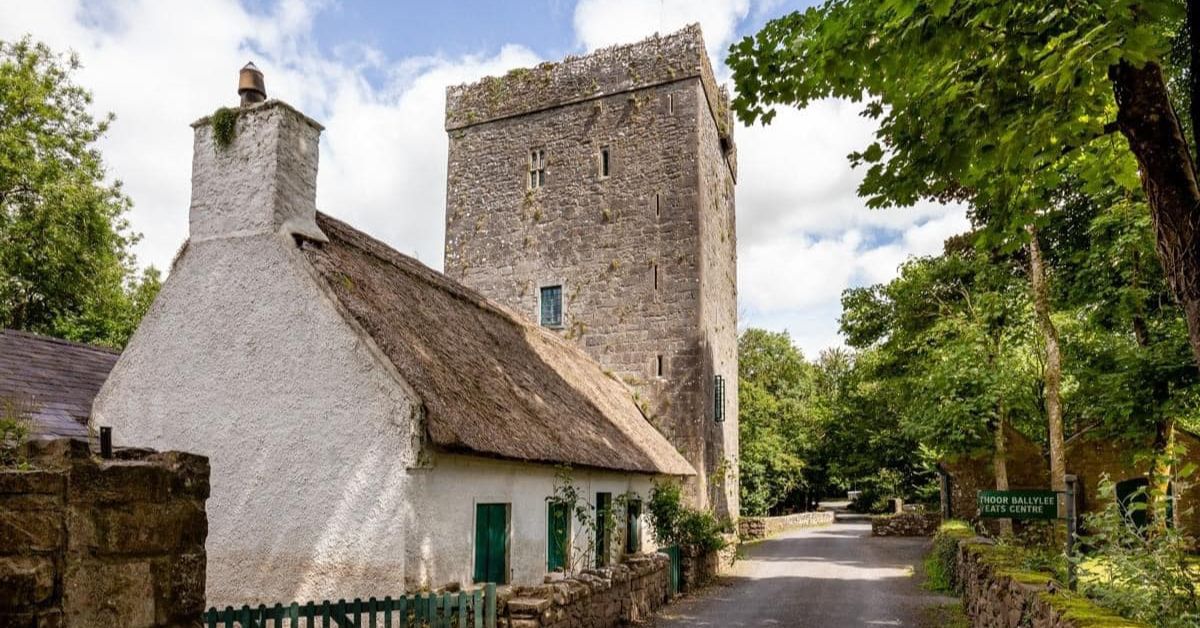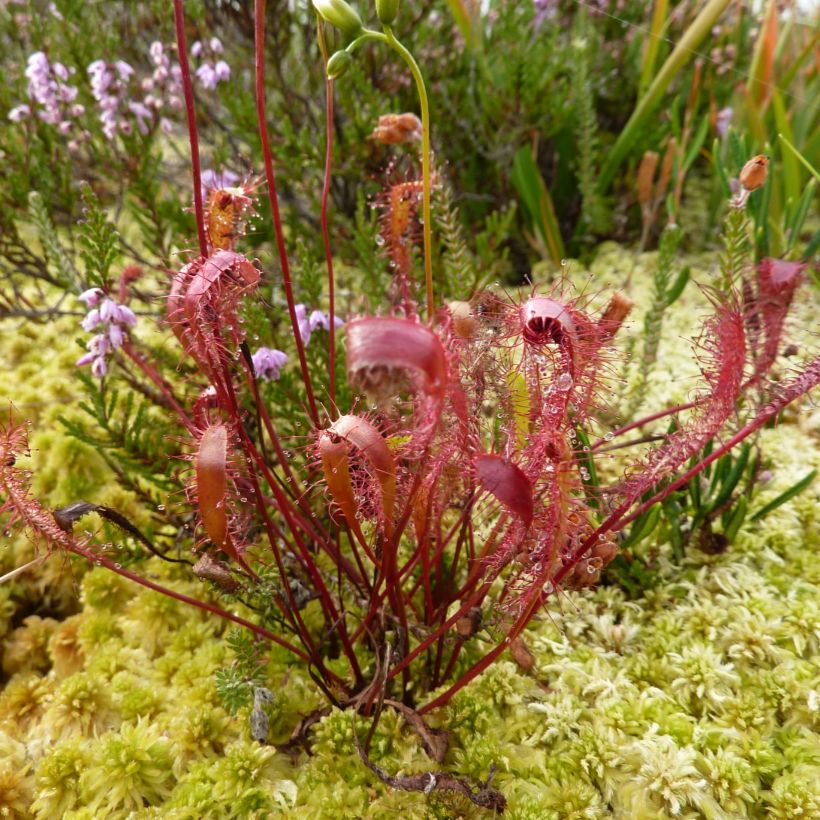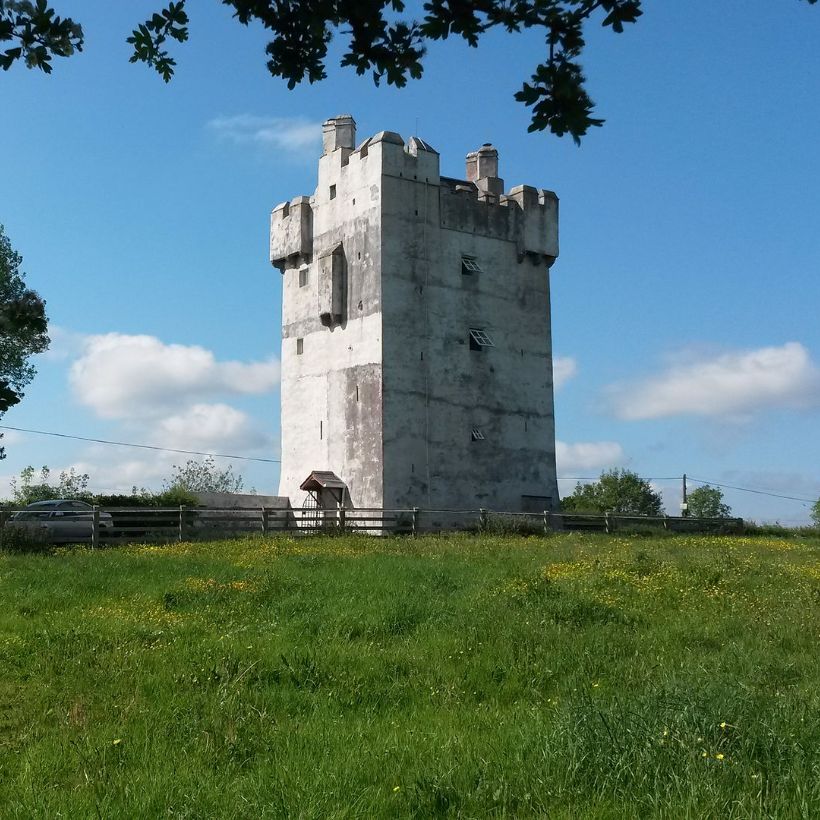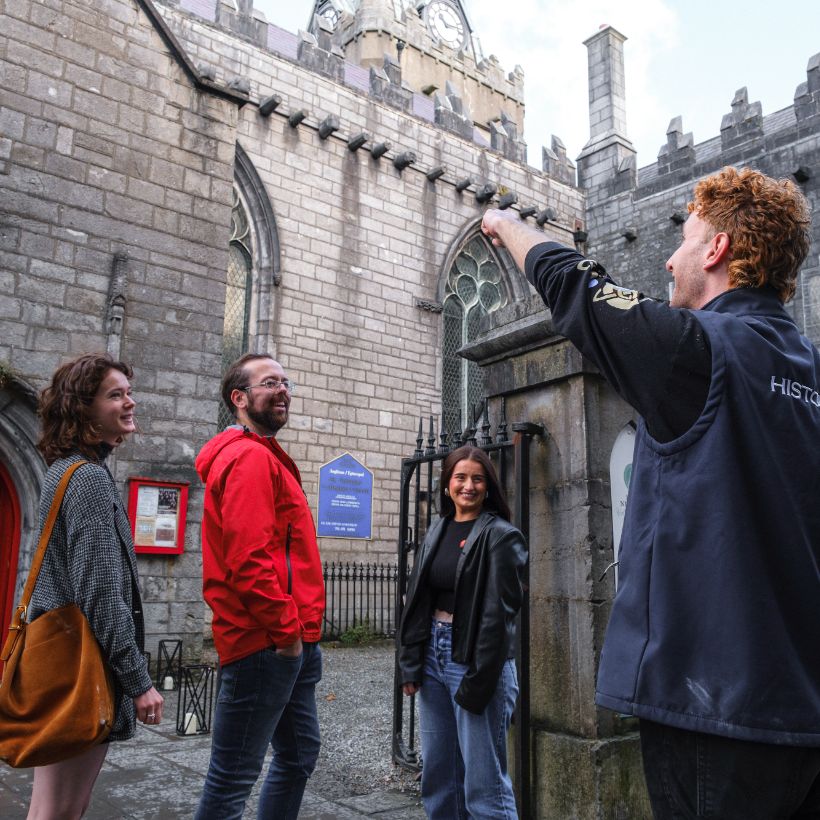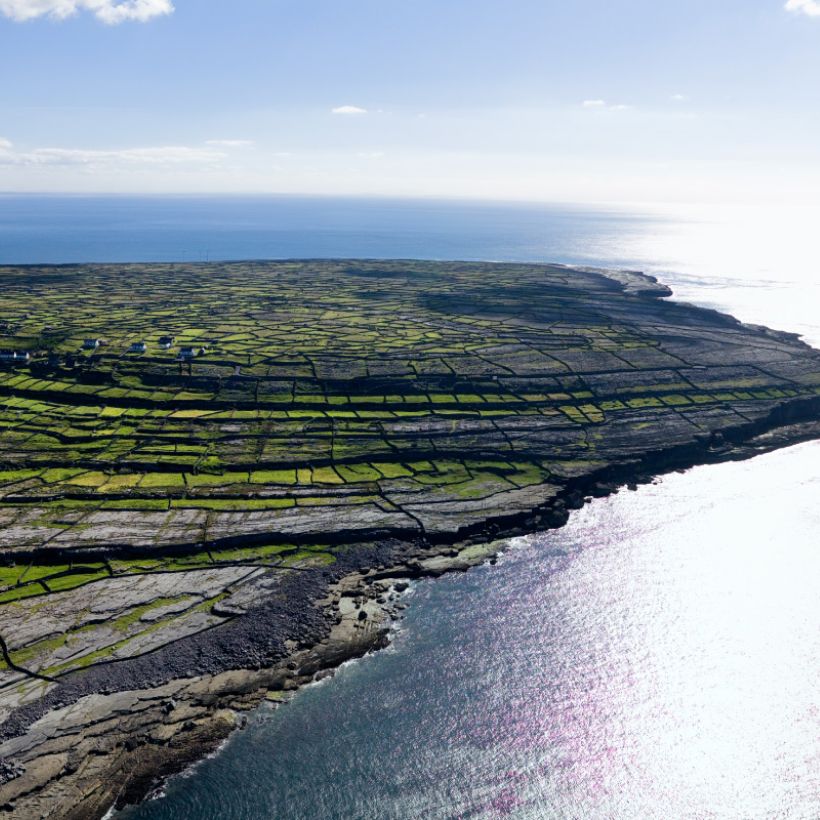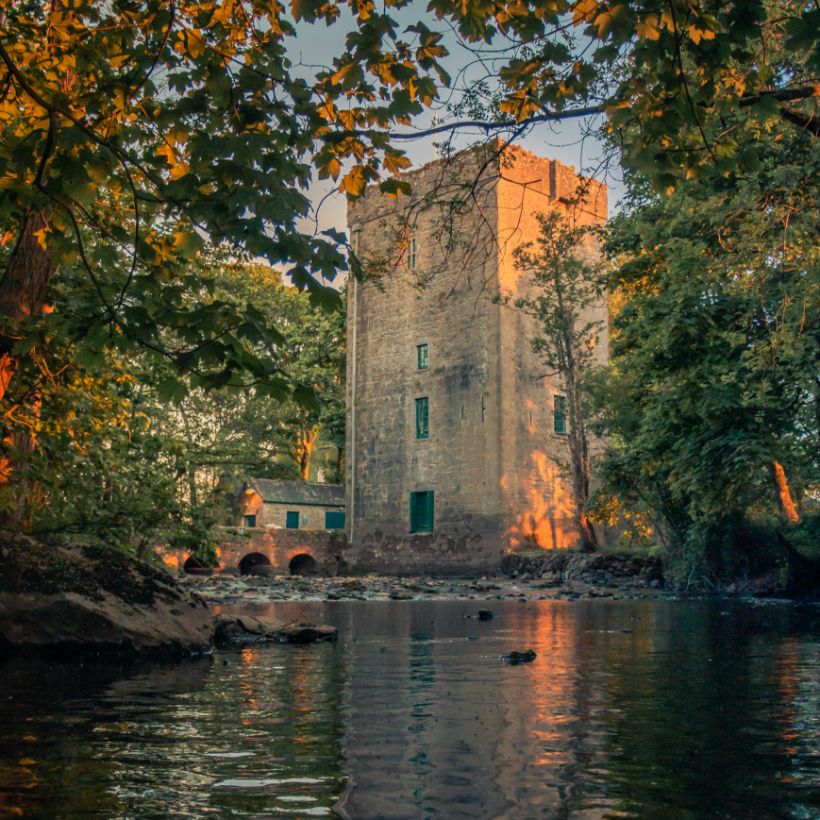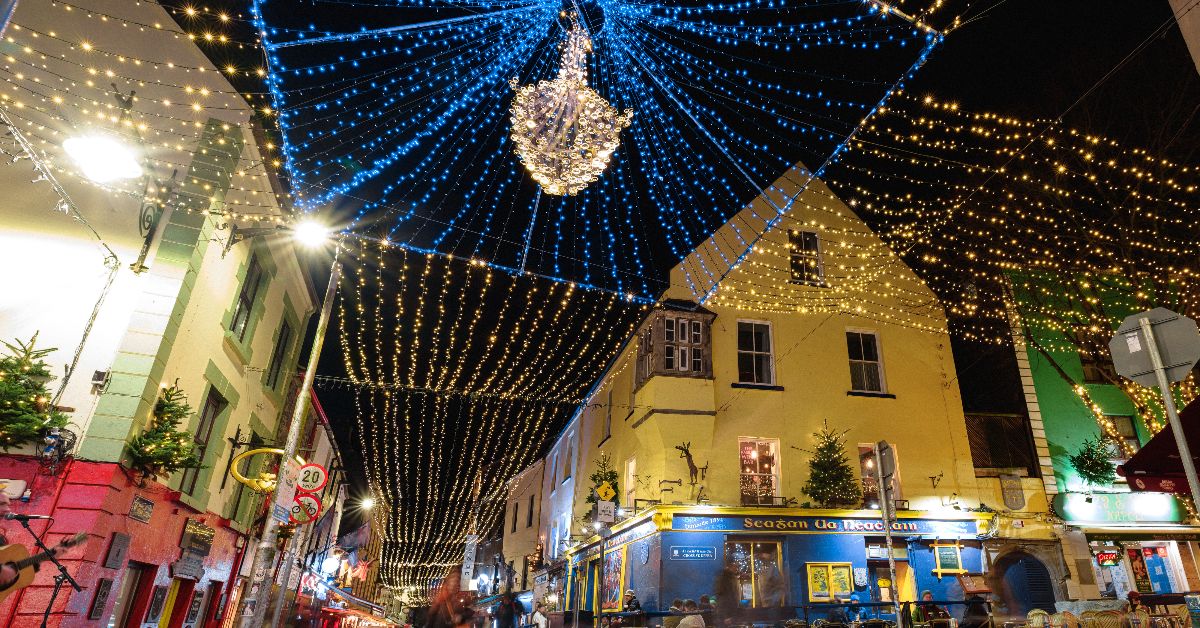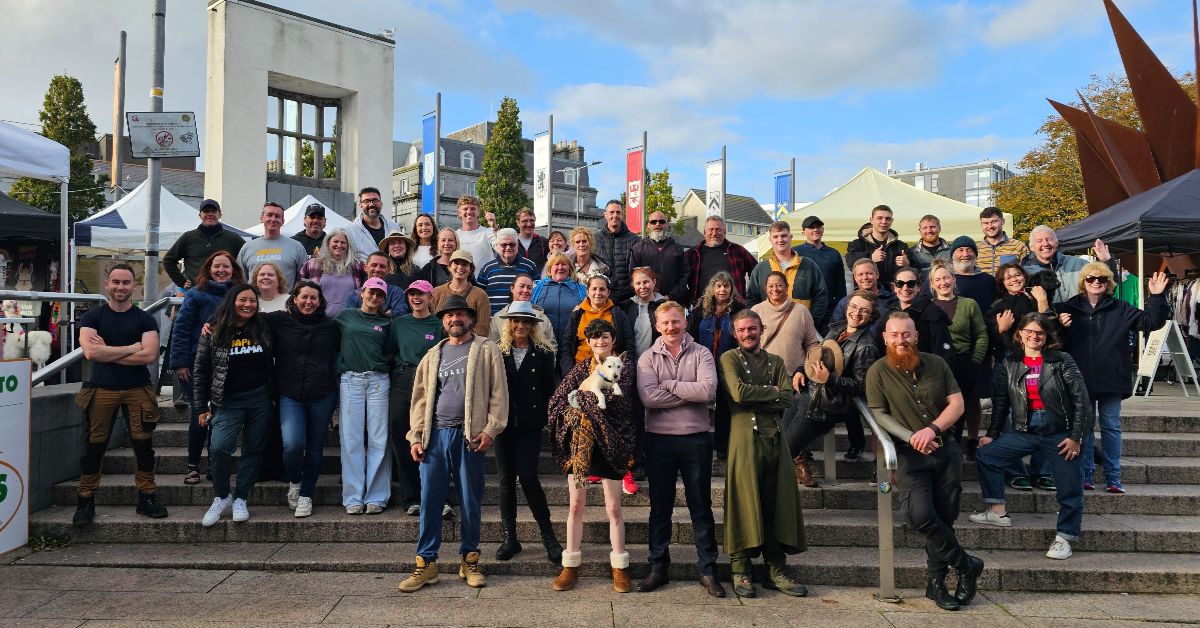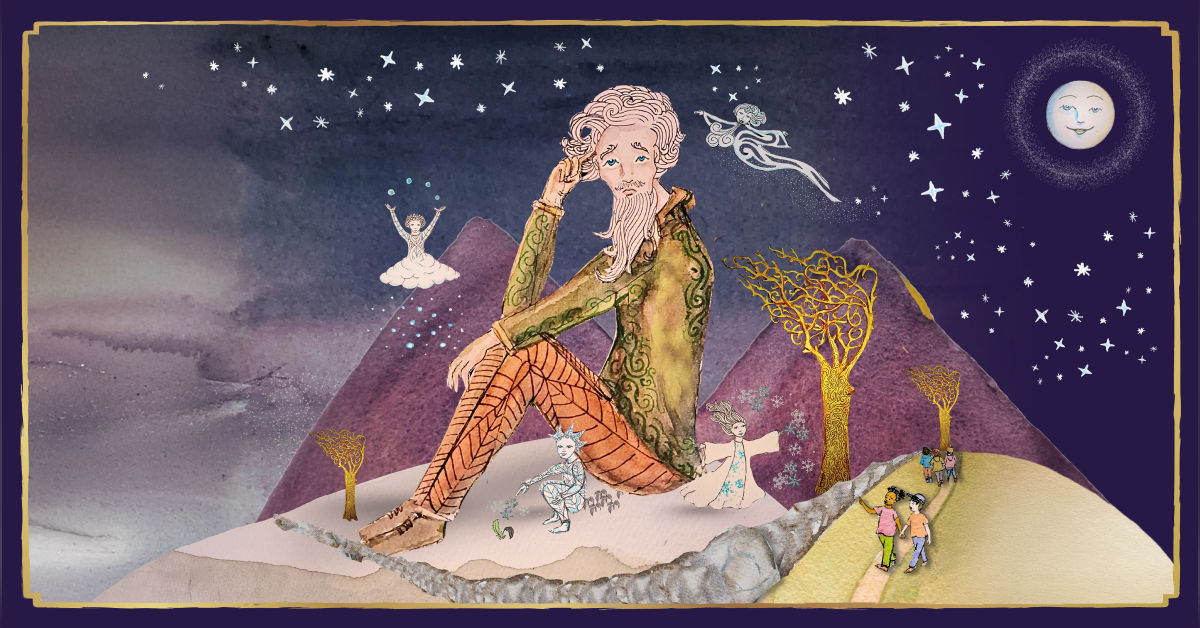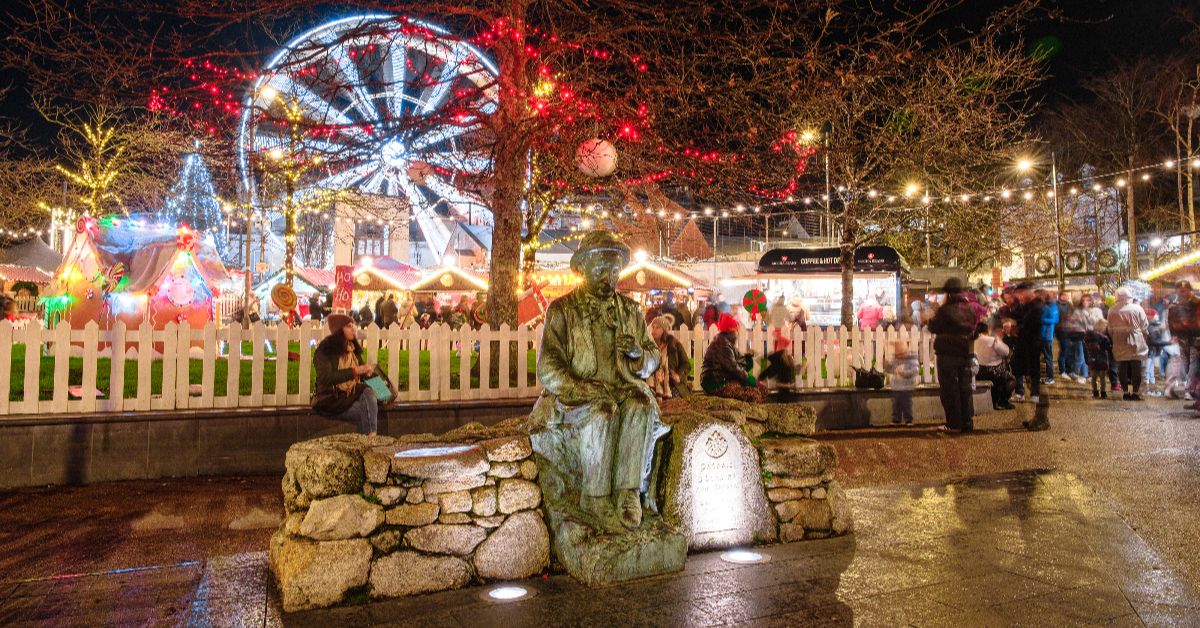If you’re planning your first trip to Galway, we’ve created a curated guide to the best attractions and experiences in Galway city and county. Check it out right here!
From scenic River Corrib cruises and medieval castles to peaceful nature reserves and historic literary landmarks, these top Galway experiences have something for every traveller. Many are budget-friendly, so you can enjoy the best of Galway without overspending.
Start planning your Galway holiday itinerary today, and who knows you might just discover your new favourite Irish destination!
For even more inspiration, read our guide; 10 attractions you shouldn't miss while visiting Galway.
above: Corrib Princess
1. Go on a 90-minute Cruise of the River Corrib
What is it? - The Corrib Princess
Why go? - A charming and leisurely cruise along the River Corrib offering a scenic and informative way to explore the historic past of Galway’s waterways.
Cost: Adults €20.14 / Seniors & Students €17 / Children U12 €10 / Infants U3 free / Family Packages available also. Tickets are available here. (Please note tours run from April to October).
The Corrib Princess is a fantastic way to see the hidden corners of Lough Corrib that are otherwise inaccessible by land. Dubbed a hidden gem of Galway city, during your tour the boat’s captain, Aodán, will tell you fascinating stories relating to Woodquay and the River Corrib. Did you know that Woodquay got its name because it once used to be the spot where timber was delivered into the city? Well, that is just the beginning of the interesting facts you’ll learn during your visit. You’ll also hear about how Menlo Castle fell into ruin as well as the chilling story of the ferocious O'Flaherty's and how they paid their rent “with interest” to the De Burgos and see the remains of ring forts and crannógs that once lined the River Corrib. To plan your visit, check the schedules and booking details at the link above.
This is Galway tip - On the tour you can enjoy their popular Irish coffee, served at the bar onboard, which has a deliciously thick layer of cream on top that insulates the hot drink beneath. It’s absolutely delicious and the best way to stay warm during the tour.
Address: Departure point- Steamers Quay, Waterside, Woodquay, Galway City.
How to get here
above: The Living Bog
2. Explore the Walkways of Galway’s Living Bog
What is it? - Carrownagappul Bog - The Living Bog
Why go? - At almost 1,200 hectares, Carrownagappul Bog, now a Special Area of Conservation (SAC), is one of the largest and most accessible active raised bogs in Ireland. Carefully restored boardwalks and trails guide visitors through a peaceful landscape, allowing for a fully immersive, low-impact nature experience.
Cost: free (for enquiries and to book a guided visit; call 090 96 79765 or email gtcomountbellew@gmail.com).
Thanks to the Living Bog Project, Mountbellew’s bog has been brought back from the brink. Once drained and damaged, it now thrives again, breathing new life into the landscape, and into the hearts of those who visit. Begin your visit at the Interpretative Centre on Ballygar Road, where a warm welcome awaits. Enjoy a short video presentation on peatland ecology, browse local handmade crafts, or simply sit with a cup of tea as you take in the story of the bog’s recovery. Walking along the trails you’ll find yourself surrounded by a variety of native plants such as bog cotton, heather (ling), and Spaghnum moss which shelter hundreds of rare species. Carefully restored boardwalks and trails guide visitors through a peaceful landscape, allowing for a fully immersive, low-impact nature experience.
This is Galway tip - Guided tours and walks offer a deeper dive, led by knowledgeable locals who explain how the bog functions as a climate regulator, carbon store, and biodiversity haven. These guided tours/walks are available for all visitors, including larger tour groups, and school groups. One of the tour highlights is ‘Patch’s Garden,’ a small raised till island within the bog that once served as a home and vegetable garden.
Address: Carrownagappul, Carnagopple, County Galway.
How to get here
above: Brackloon Castle
3. See the Views from the Top of an Irish Medieval Castle
What is it? - Brackloon Castle
Why go? - Brackloon Castle is one of Ireland’s smallest surviving medieval castles still in use today. Located in a tranquil corner of East Galway, this castle is not just a relic of the past but a thriving family home.
Cost: €70 per person
Under the leadership of its custodians, Donal and Alison, visitors are welcomed into a truly unique experience that blends five centuries of history with the warmth of modern Irish hospitality. A private, two-hour tour takes guests on an intimate exploration of the castle’s five floors, each telling stories of its turbulent 500-year past and careful restoration. Starting at the kitchen table, visitors enjoy tea and refreshments while hearing about the O'Madden clan (the castle’s original builders) who ruled the area for hundreds of years until the mid-1600s. As guests ascend the original narrow spiral stone staircase, they encounter fascinating defensive features from the 16th and 17th centuries, including gunholes that once protected the castle from invaders and now serve as a safe haven for nesting birds. These tours culminate on the battlements, which offer sweeping views of the surrounding countryside. For anyone seeking a hands-on, personal look back into Galway’s medieval history, Brackloon Castle is an unmissable gem!
This is Galway tip - The upper room of the castle features a surprising highlight. Here, visitors gather around an open fireplace as Donal and Alison share tales of the castle’s restoration journey, creating an unforgettable atmosphere of warmth and authenticity.
Address: Clonfert, Ballinasloe, County Galway
How to get here
above: Inishbofin Island
4. Take a Trip to one of the Most Westerly Islands off the Irish Coast
What is it? - Inishbofin Island
Why go? - A serene and rugged escape off the coast of County Galway, Inishbofin is a haven for nature lovers, history buffs, and those wanting to enjoy a slower pace of life.
Cost: Inishbofin Ferry prices: Adult €25 / Student €15 / Child 6-17 €10 / Child 3-5 €5 / Under 3 free / free for anyone with a valid travel pass card. Tickets and ferry information here.
The unique island of Inishbofin is only a 30 minute crossing away from Cleggan, a lovely little village that is only a short drive from Clifden town centre. It can be visited on a day trip or alternatively you can spend the night with one of the island’s accommodation providers and enjoy seeing the night sky without the light pollution for a change. The island’s welcoming community keeps traditions alive through music sessions, festivals, and storytelling, making it a lively spot despite its small size. Highlights include the 13th-century Cromwell’s Castle, the 15th-century St. Colman’s Church ruins, and numerous marked walking trails that offer stunning views of the Atlantic Ocean. For birdwatchers and wildlife enthusiasts, Inishbofin is a paradise, with seals, dolphins, and a variety of seabirds often spotted offshore.
This is Galway tip - Plan your visit between May and September for the best weather and most services open. We also recommend booking your ferry tickets in advance, especially during peak summer months, and consider renting a bike on the island to explore at your own pace.
Address: Middlequarter, Inishbofin Island, County Galway.
How to get here (ferries from Cleggan to Inishbofin Island are available at inishbofinferry.ie)
above: St. Nicholas' Collegiate Church
5. Tour the Church that’s almost as old as Galway City itself!
What is it? - St. Nicholas’ Collegiate Church
Why go? - For over 700 years, St. Nicholas’ Collegiate Church has stood tall in the heart of Galway city. Spanning centuries of a beautiful, enriching and sometimes bloody history, a walk throughout the church is truly like walking a timeline of Galway’s past.
Cost: free (donations welcome) / Tours: Self-guided from €5, Bell-Ringing Experience from €21.20, Guided Medieval Tour from €11, St. Nicholas’ Unlocked Tour from €16.
Located right in the heart of the city, St Nicholas’ Collegiate Church has roots tracing all the way back to 1320. Stepping through its heavy stone doorway feels like opening a chapter of Galway’s long and layered past. Stained glass windows bring a cascade of colour and light across the rooms and the recently uncovered stonewalls reveal how the church would have looked to parishioners as far back as the 1500s. There are still the remnants of angel icons who were defaced by Cromwellian troops in the 1600s. Only one angel remains unscathed, and was fittingly dubbed the name of the ‘smug angel’. Over the centuries, St Nicholas’ has seen everything from medieval markets bustling outside its doors to visits from Christopher Columbus. It’s a space that’s still very much alive today, regularly hosting concerts, exhibitions, and community events alongside its services, so be sure to check out their schedule of events as well during your time here in Galway.
This is Galway tip - Pop in for a tour during the daytime when the doors are open to the public, then head straight outside to browse the nearby Galway Market (open weekends) right beside the church.
Address: Lombard Street, Galway City.
How to get here
above: Woodville House & Walled Garden
6. Visit a Beautiful Walled Garden with a surviving Dovecote
What is it? - Woodville House & Walled Garden
Why go? - Woodville House is a beautifully restored 18th-century Georgian estate that offers visitors a delightful mix of history, horticulture and heritage.
Cost: Free / Guided tours are €10 per person.
Best known for its lovingly maintained walled garden (one of the few restored gardens of its kind in the West of Ireland), whether you're a garden lover, a history enthusiast or simply looking for a peaceful day out, this hidden gem is well worth the detour. Woodville House was once home to the Persse family, who are connected to Lady Gregory (nee Persse) of Coole Park. Onsite the visitor centre and small museum tell the story of the estate’s past, from landlord days to its more recent restoration. But the real highlight is the enchanting 1.5-acre walled garden: featuring colourful herbaceous borders, espaliered fruit trees, vegetable garden, rose garden and aserene water fountain. Another feature of the garden is a surviving Dovecote which is one of the few remaining “Garden Follies” in the West of Ireland and is now home to a family of white fantail doves.
This is Galway tip - Visit in late spring or early summer for the garden in full bloom, or time your visit around one of their annual events; The Celebration of Snowdrops and Helleborous, Daffodil Day, Bluebell Woods, Bunny Easter Event, The Tulip Firelight Display, Woodland and Mushroom trails, and Midnight Bat Walks. For more on these contact them via the link above.
Address: Woodville House, Ballygarraun, Kilchreest, County Galway
How to get here
above: Inis Meáin
7. The Island Residence of John Millington Synge
What is it? - Synge’s Cottage - Teach Synge
Why go? - Teach Synge is a lovingly restored 300-year-old cottage that once hosted one of Ireland’s most celebrated playwrights, John Millington Synge.
Cost: €3 Admission (Please note that it’s open only during summer months).
The museum now housed within the cottage is a tribute to Synge’s life, work and his deep connection to the Aran Islands, which inspired some of his greatest plays, including Riders to the Sea and The Playboy of the Western World. For literary lovers, history buffs or simply those chasing authenticity, a visit here is a rare chance to walk in the footsteps of a literary giant. First visiting the island in 1898, Synge was a regular guest of Brid and Paidin MacDonnchadha, and it was their great-granddaughter, Theresa Ní Fhatharta, who championed the effort to restore the house. Inside you’ll find original photographs, letters and drawings that bring Synge’s world to life. A converted stone outhouse next door holds a small but impressive reference library featuring works by and about Synge, Yeats and Lady Gregory.
This is Galway tip - To truly appreciate the place that inspired Synge’s work, take a walk along the island’s trails, and see all the dry stone walls and cliffside views before or after your visit to Teach Synge. On Inis Meáin you can also visit Synge’s Chair which is a lookout point at the edge of a sheer limestone cliff on the western side of the island. It consists of a large flat stone that resembles a chair, surrounded by smaller stones that form a sheltered enclosure.
Address: Carrowntemple, Inis Meáin, The Aran Islands.
How to get here (ferries from Rossaveal to Inis Meáin are available at aranislandferries.com)
above: Thoor Ballylee, photo by Luis de Morais
8. Climb the picturesque Tower House with ties to WB Yeats
What is it? - Thoor Ballylee
Why go? - If you're a fan of poetry, history, or enchanting Irish landscapes, Thoor Ballylee is a must-visit. This 15th-century Norman tower house was once home to Nobel Prize-winning poet W.B. Yeats, who purchased and restored it in 1917.
Cost: Adults €7 / Seniors & Students €5 / Children U12 free / Group (min 10 people) €6. (Please note that Thoor Ballylee is only open between Easter and October).
At Thoor Ballylee, visitors can climb the tower’s narrow spiral staircase to stand in the poet’s study, where he wrote parts of The Tower and The Winding Stair. Peer out the small stone windows to views of the surrounding countryside that have changed little since Yeats’ time. The adjoining visitor centre offers insight into Yeats' life, his connection to the tower, and his role in the Irish Literary Revival. On the grounds surrounding the tower, guests can enjoy a peaceful riverside walk up the stream to the old mill, picnic spots and photo opportunities.
This is Galway tip - Pair your visit to Thoor Ballylee with a trip to nearby Coole Park, once the estate of Lady Gregory and another key site of the Irish Literary Revival. The two places are just a 10-minute drive apart and visiting both gives a fuller picture of the creative world Yeats was a part of.
Address: Ballylee, Gort, County Galway.
How to get here
above: The Irish Workhouse Centre
9. Take A Look Inside one of Ireland’s Most Tragic Chapters
What is it? - The Irish Workhouse Centre
Why go? - The Irish Workhouse Centre offers a powerful and eye-opening look into one of the most sobering chapters of Irish history.
Cost: Adults €12 / Seniors & Students €8 / Families (2 adults + 2 children U12) €25 / Children - U12s €6 / U7s free. (Please note that The Irish Workhouse Centre is only open from May to October).
Housed in an original 19th-century workhouse (one of the best-preserved in Ireland) The Irish Workhouse Centre tells the story of the poor who were forced to enter these harsh institutions during famine and hardship. A visit here is not just informative; it’s emotional, thought-provoking, and unforgettable. Guided tours take you through the original buildings including the reception area, women’s dormitory, schoolroom, kitchen, and even the punishment cells. Through exhibits, personal accounts, and historical artefacts, you’ll gain a deep understanding of how the workhouse system operated and its long-lasting impact on Irish society.
This is Galway tip - After visiting the centre, take a short stroll to nearby Portumna Castle and Gardens or the scenic shores of Lough Derg. It’s a great way to decompress after such a profound experience.
Address: St Brigid's Road, Portumna, County Galway.
How to get here
above: photo of Nora Barnacle
10. See the Homeplace of James Joyce’s Muse
What is it? - Nora Barnacle’s House
Why go? - This cosy little building was once home to Nora Barnacle, the wife and lifelong muse of James Joyce, one of the most influential writers of the 20th century.
Cost: Entrance is by donation - recommended at €5 / Private tours are €20 per person available on request. (Please note that Nora Barnacle’s House is only open during the summer months).
Behind the bright blue door on the Bowling Green is one of the smallest museums in Ireland. The Nora Barnacle House offers a rare, personal glimpse into the woman who inspired Ulysses and Dubliners. Restored with care and authenticity, inside, you'll find period furnishings, photographs, letters, and thoughtful exhibitions that tell the story of Nora’s early life in Galway, her relationship with Joyce, and her later years in Zurich. While the house is small in size it offers visitors a side of the Joyce legacy that’s often overlooked but deeply personal, and is absolutely worth a visit for anyone interested in Joyce and Irish literature.
This is Galway tip - Book one of the guided tours which are led by passionate volunteers or local historians. These tours bring the house and its stories to life, making the experience far richer than a self-guided walk-through.
Address: 8 Bowling Green, Galway City.
How to get here
Main photo of Thoor Ballylee courtesy of Yeats Thoor Ballylee Society.
Published on Updated on


